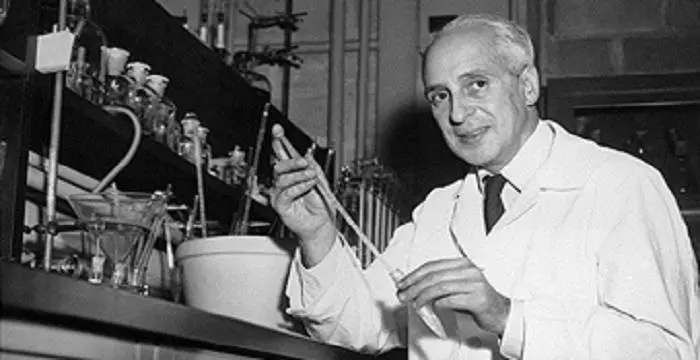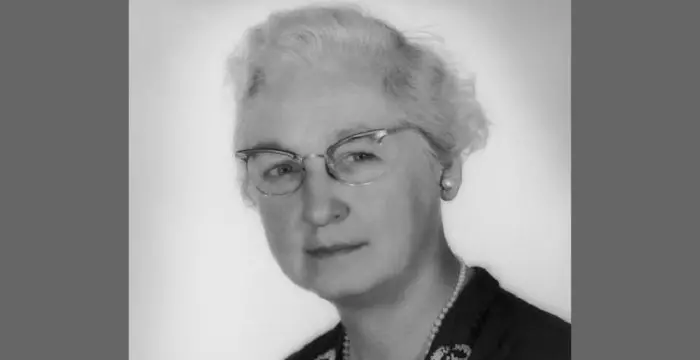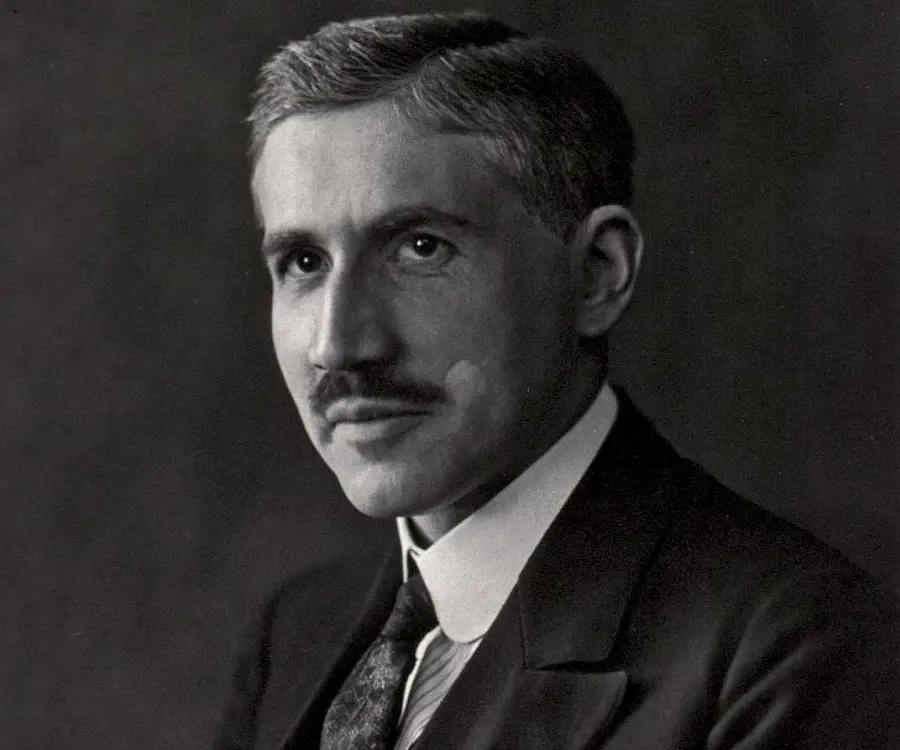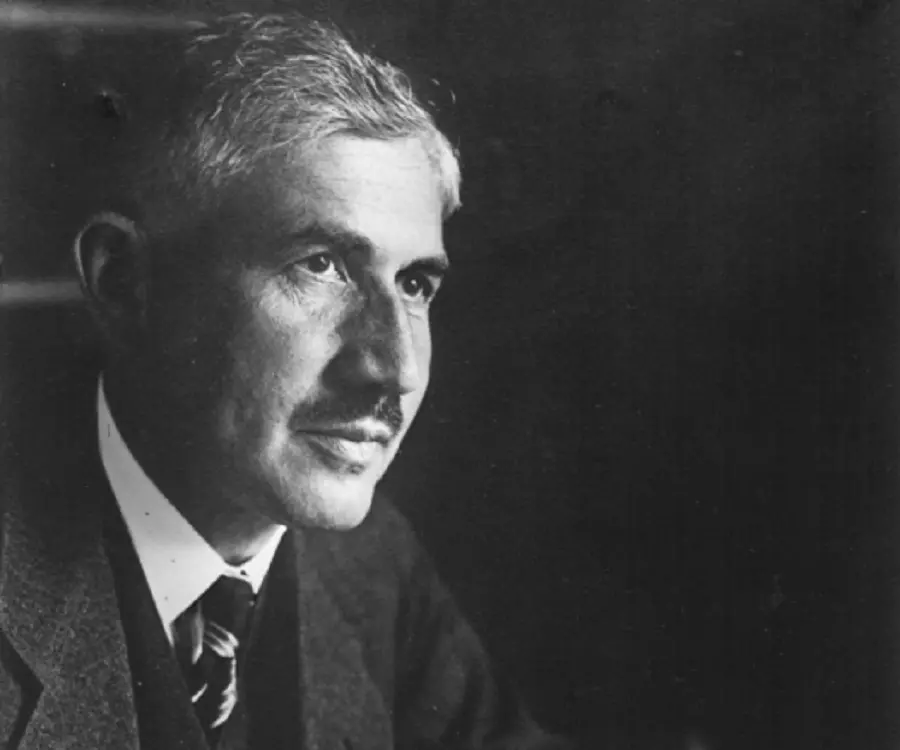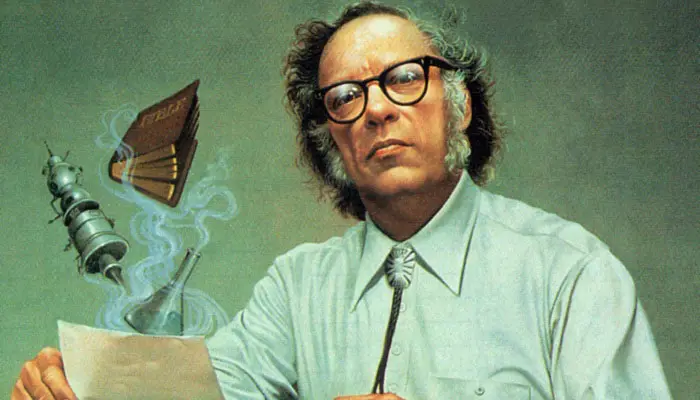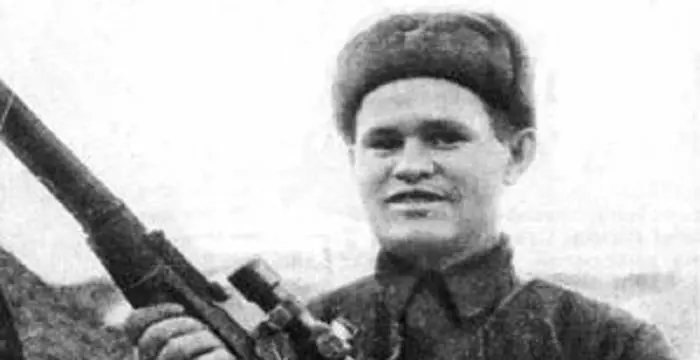
Otto Fritz Meyerhof - Physicians, Career and Family
Otto Fritz Meyerhof's Personal Details
Otto Fritz Meyerhof was a German physician and biochemist who won the 1922 Nobel Prize in Medicine
| Information | Detail |
|---|---|
| Birthday | April 12, 1884 |
| Died on | October 6, 1951 |
| Nationality | German |
| Famous | Physicians, Biochemists, Physicians |
| Known as | Dr. Otto Fritz Meyerhof |
| Universities |
|
| Birth Place | Hanover |
| Religion | Judaism |
| Gender | Male |
| Sun Sign | Aries |
| Born in | Hanover |
| Famous as | Physician and Biochemist |
| Died at Age | 67 |
// Famous Physicians
Maria Montessori
Maria Montessori was a physician and educator who developed the approach of Montessori education. This biography of Maria Montessori provides detailed information about her childhood, life, achievements, works & timeline.
Severo Ochoa
Severo Ochoa was a Spanish physician and biochemist who won the 1959 Nobel Prize in Physiology or Medicine. Check out this biography to know about his childhood, life, achievements, works & timeline.
Virginia Apgar
Known for inventing a novel newborn scoring system, Virginia Apgar was a reputed Physician. Check out this biography to know about her childhood, family life, achievements and other facts related to her life.
Otto Fritz Meyerhof's photo
Who is Otto Fritz Meyerhof?
Otto Fritz Meyerhof was a German physician and biochemist who won the 1922 Nobel Prize in Medicine for his discovery of the fixed relationship between oxygen consumption and metabolism of lactic acid in the muscle. Meyerhof was born to Jewish parents in Hildesheim. However, when he was an infant, the family moved to Berlin. It was at Berlin that Meyerhof gained his scientific education. A kidney disease temporarily disrupted his studies but gave him an artistic and intellectual insight that helped him in the later phase of his scientific career. After graduating with an honorary doctorate degree, Meyerhof started his career working in a laboratory at Heidelberg. In 1920, he made the revolutionary discovery that won him a Nobel Prize in Physiology or Medicine. He shared the prize with English physiologist, Archibald Vivian Hill who in turn discovered the production of heat in muscles. In his five decades of scientific career, Meyerhof took up many administrative positions. He headed the Kaiser Wilhelm Institute for Medical Research at Heidelberg from 1929 to 1938. In 1938, he served as the Director of Research at the Institut de Biologie physico-chimique at Paris. In United States, he attained the position of a Research Professor of Physiology Chemistry.
// Famous Biochemists
Robert Huber
Robert Huber is a German biochemist and Nobel Laureate. Check out this biography to know about his childhood, life, achievements, works & timeline.
Charles Best
Charles Best was a great scientist and a renowned physiologist who is remembered for being the co-discoverer of insulin. Read this biography to learn about his profile, childhood, life and timeline.
Isaac Asimov
Isaac Asimov was an American professor of biochemistry and a renowned author of science fiction and popular science books. Read this biography to know more about his life.
Childhood & Early Life
Otto Fritz Meyerhof was born on April 12, 1884 to Jewish parents, Felix Meyerhof and Bettina May, in Hildesheim. His father was a merchant by occupation.
The family moved to Berlin after the birth of young Meyerhof. At Berlin, he completed his primary education from Wilhelms Gymnasium, a classical secondary school.
At the age of 16, Meyerhof suffered from a kidney problem that restricted his movement. He was bed-ridden for a couple of months. During this time, his mother had an important influence on his budding mind. She encouraged him to read literary works and write poetry. Much of Meyerhof’s artistic and intellectual development took place during this time.
Following his matriculation, Meyerhof studied medicine at Freiburg, Berlin, Strasbourg, and Heidelberg. In 1909, he graduated in medicine with a thesis on a psychiatric subject and devoted himself to psychology and philosophy.
Career
Completing his studies, he published a book, ‘Beiträge zur psychologischen Theorie der Geistesstörungen’ or ‘Contributions to the psychological theory of mental disturbances’ and an essay on ‘Goethes Methoden der Naturforschung’ or ‘Goethe's methods of scientific research’.
At Heidelberg, Meyerhof came under the influence of Otto Warburg. The latter inculcated in Meyerhof the interest for cell physiology. He juggled his time between the laboratory of the Heildelberg Clinic and the Zoological station at Naples.
In 1912, Meyerhof moved to Kiel. A year later, he qualified for the post of the university lecturer in physiology after getting trained from Professor Bethe. The lectures delivered by him at Kiel were later compiled and published under the name, ‘The Chemical Dynamics of Living Matter’
In 1915, when Professor Hober took up Directorship at the Institute of Physiology, Meyerhof was appointed as his Assistant. Three years later, in 1918, he was promoted as the Assistant Professor.
All through his early academic career, Meyerhof was interested in the energy released by foodstuffs and consumed by living cells. He studied the methods of gas analysis through the calorimetric measurement of heat production.
Meyerhof’s most important scientific achievement came when he discovered the fixed relationship between the consumption of oxygen and the metabolism of lactic acid in the muscle.
He devised a new method under which he proved that the lactic acid was derived from glycogen in the muscle in anaerobic condition and that the amount of lactic acid formed was proportional to the tension produced in the muscle. He stated that during the recovery stage, about a quarter of the lactic acid was oxidized, and the energy of this reaction was used to reconvert the remainder of the lactic acid to glycogen. This discovery won him the Nobel Prize.
Meyerhof’s scientific career had more credits than just a Nobel Prize winning discovery. He intensively studied the effects of narcotics and methylene blue on oxidation processes and respiration of killed cells. The physico-chemical analogy between oxygen respiration and alcoholic fermentation caused him to study both these processes in yeast extract. Resultantly, he discovered a co-enzyme of respiration, which could be found in all cells and tissues.
In 1923, Meyerhof was offered a Professorship of Biochemistry in the United States. However, he declined the same and instead accepted the offer by the Kaiser Wilhelm Gesellschaft to join the group, including C. Neuberg, F. Haber, M. Polyani, and H. Freundlic working at Berlin-Dahlem.
In 1925, Meyerhof together with Kurt Lohmann published first of the many joint papers. Through the paper, he thrashed the belief that the ability of muscle to convert glycogen to lactic acid depended on the integrity of the muscle structure and that bacterial action and glycolytic activity as responsible for the same. Instead, through his report he showed that a muscle extract contained the glycolytic enzyme systems and that it was active shortly after its preparation. He thus proved that the glycolysis was not due to bacterial activity. He published the report in 1926-27 which became the basis of the Emden-Meyerhof theory of glycolysis.
In 1929, he took charge of the then newly-founded Kaiser Wilhelm Institute for Medical Research at Heidelberg.
In 1938, he moved to Paris in an effort to flee away from the Nazi regime. For two years, from 1938 until 1940 he took up the post of the Director of Research at the Institut de Biologie physico-chimique at Paris. His financial well-being was taken care of by the Josiah Macy, Jr. Foundation.
In 1940 when the Nazi’s invaded France, it became quintessential for Meyerhof to move from Paris. As such, with a little assistance, he finally managed to reach United States in October 1940. There, he took up the post of a Research Professor of Physiology Chemistry that had been especially created for him by the University of Pennsylvania, Philadelphia. In the last decade of his life in United States, Meyerhof published more than 50 papers.
In 1946, he partially separated the calcium-activated enzyme adenosine-triphosphatase (ATPase), found in muscle, from myosin. Two years later, in 1948 he established in muscle a new ATPase which was magnesium-activated, and associated the same with the microsomal fraction of the cell.
Major Works
Meyerhof demonstrated the fixed relationship between the consumption of oxygen and the metabolism of lactic acid in the muscle. The discovery was extremely significant in the field of physiology and won him a Nobel Prize for Physiology or Medicine in 1922.
Awards & Achievements
He received the coveted Nobel Prize for Physiology or Medicine 1922 for his discovery of the relationship between the consumption of oxygen and the metabolism of lactic acid in the muscle. He shared it with Archibald Vivian Hill who discovered the production of heat in muscles during the same time.
He was a Fellow of the Royal Society of London
Personal Life & Legacy
During his time in Heidelberg, Meyerhof befriended Hedwig Schallenberg, a painter by profession. The two tied the knot in 1914. The couple was blessed with three children, a daughter, Bettina Meyerhof and two sons, Gottfried and Walter.
In 1944, Meyerhof suffered a heart attack. However, he survived the same but faced yet another one in 1951 which finally led to his death. He died on October 6, 1951.
Trivia
Meyerhof received the Nobel Prize one year later in 1923, as in 1922, the committee kept the award in statutes, for not finding any deserved nomination for that year.
// Famous Physicians
Al-Zahrawi
Al-Zahrawi, was an illustrious medieval Arab Muslim physician and surgeon. Check out this biography to know about his childhood, family life, achievements and interesting facts about him.
Jabir Ibn Hayyan
Jabir Ibn Hayyan was a medieval era polymath. Check out this biography to know about his life, works and achievements.
Maria Montessori
Maria Montessori was a physician and educator who developed the approach of Montessori education. This biography of Maria Montessori provides detailed information about her childhood, life, achievements, works & timeline.
Otto Fritz Meyerhof's awards
| Year | Name | Award |
|---|---|---|
Other | ||
| 0 | Nobel Prize in Physiology or Medicine | |
Otto Fritz Meyerhof biography timelines
- // 12th Apr 1884Otto Fritz Meyerhof was born on April 12, 1884 to Jewish parents, Felix Meyerhof and Bettina May, in Hildesheim. His father was a merchant by occupation.
- // 1909Following his matriculation, Meyerhof studied medicine at Freiburg, Berlin, Strasbourg, and Heidelberg. In 1909, he graduated in medicine with a thesis on a psychiatric subject and devoted himself to psychology and philosophy.
- // 1912In 1912, Meyerhof moved to Kiel. A year later, he qualified for the post of the university lecturer in physiology after getting trained from Professor Bethe. The lectures delivered by him at Kiel were later compiled and published under the name, ‘The Chemical Dynamics of Living Matter’
- // 1914During his time in Heidelberg, Meyerhof befriended Hedwig Schallenberg, a painter by profession. The two tied the knot in 1914. The couple was blessed with three children, a daughter, Bettina Meyerhof and two sons, Gottfried and Walter.
- // 1915 To 1918In 1915, when Professor Hober took up Directorship at the Institute of Physiology, Meyerhof was appointed as his Assistant. Three years later, in 1918, he was promoted as the Assistant Professor.
- // 1922Meyerhof demonstrated the fixed relationship between the consumption of oxygen and the metabolism of lactic acid in the muscle. The discovery was extremely significant in the field of physiology and won him a Nobel Prize for Physiology or Medicine in 1922.
- // 1922He received the coveted Nobel Prize for Physiology or Medicine 1922 for his discovery of the relationship between the consumption of oxygen and the metabolism of lactic acid in the muscle. He shared it with Archibald Vivian Hill who discovered the production of heat in muscles during the same time.
- // 1922 To 1923Meyerhof received the Nobel Prize one year later in 1923, as in 1922, the committee kept the award in statutes, for not finding any deserved nomination for that year.
- // 1923In 1923, Meyerhof was offered a Professorship of Biochemistry in the United States. However, he declined the same and instead accepted the offer by the Kaiser Wilhelm Gesellschaft to join the group, including C. Neuberg, F. Haber, M. Polyani, and H. Freundlic working at Berlin-Dahlem.
- // 1925 To 1926In 1925, Meyerhof together with Kurt Lohmann published first of the many joint papers. Through the paper, he thrashed the belief that the ability of muscle to convert glycogen to lactic acid depended on the integrity of the muscle structure and that bacterial action and glycolytic activity as responsible for the same. Instead, through his report he showed that a muscle extract contained the glycolytic enzyme systems and that it was active shortly after its preparation. He thus proved that the glycolysis was not due to bacterial activity. He published the report in 1926-27 which became the basis of the Emden-Meyerhof theory of glycolysis.
- // 1929In 1929, he took charge of the then newly-founded Kaiser Wilhelm Institute for Medical Research at Heidelberg.
- // 1938 To 1940In 1938, he moved to Paris in an effort to flee away from the Nazi regime. For two years, from 1938 until 1940 he took up the post of the Director of Research at the Institut de Biologie physico-chimique at Paris. His financial well-being was taken care of by the Josiah Macy, Jr. Foundation.
- // Oct 1940In 1940 when the Nazi’s invaded France, it became quintessential for Meyerhof to move from Paris. As such, with a little assistance, he finally managed to reach United States in October 1940. There, he took up the post of a Research Professor of Physiology Chemistry that had been especially created for him by the University of Pennsylvania, Philadelphia. In the last decade of his life in United States, Meyerhof published more than 50 papers.
- // 1946 To 1948In 1946, he partially separated the calcium-activated enzyme adenosine-triphosphatase (ATPase), found in muscle, from myosin. Two years later, in 1948 he established in muscle a new ATPase which was magnesium-activated, and associated the same with the microsomal fraction of the cell.
// Famous Aries Celebrities peoples
Skai Jackson
Skai Jackson is an American child actress with huge fan following. Find more about her family & personal life, relationships, facts and more.
Shemar Moore
Shemar Moore is a model turned actor best known for his role in the television series ‘The Young and the Restless’. This biography of Shemar Moore provides detailed information about his childhood, life, achievements, works & timeline.
Vasily Zaytsev
Vasily Zatysev was a Russian sniper who served during the World War II. Check out this biography to know about his childhood, family life, achievements and fun facts about him.
Ivey Meeks
Ivey Meeks is an American YouTube star and model. Let’s have a look at her family and personal life including age, date of birth, net worth, boyfriends and fun facts.
Tobi Lerone
Check out all that you wanted to know about Tobi Lerone, the famous YouTube Personality and gamer; his birthday, his family and personal life, his girlfriends, fun trivia facts and more.
Simone Signoret
Simone Signoret was a French actress who became the first French person to win an Academy Award. Check out this biography to know about her childhood, family life, achievements and other facts related to her life.
Otto Fritz Meyerhof's FAQ
What is Otto Fritz Meyerhof birthday?
Otto Fritz Meyerhof was born at 1884-04-12
When was Otto Fritz Meyerhof died?
Otto Fritz Meyerhof was died at 1951-10-06
Where was Otto Fritz Meyerhof died?
Otto Fritz Meyerhof was died in Philadelphia
Which age was Otto Fritz Meyerhof died?
Otto Fritz Meyerhof was died at age 67
Where is Otto Fritz Meyerhof's birth place?
Otto Fritz Meyerhof was born in Hanover
What is Otto Fritz Meyerhof nationalities?
Otto Fritz Meyerhof's nationalities is German
What was Otto Fritz Meyerhof universities?
Otto Fritz Meyerhof studied at University of Strasbourg, Heidelberg University
What is Otto Fritz Meyerhof's religion?
Otto Fritz Meyerhof's religion is Judaism
What is Otto Fritz Meyerhof's sun sign?
Otto Fritz Meyerhof is Aries
How famous is Otto Fritz Meyerhof?
Otto Fritz Meyerhof is famouse as Physician and Biochemist

